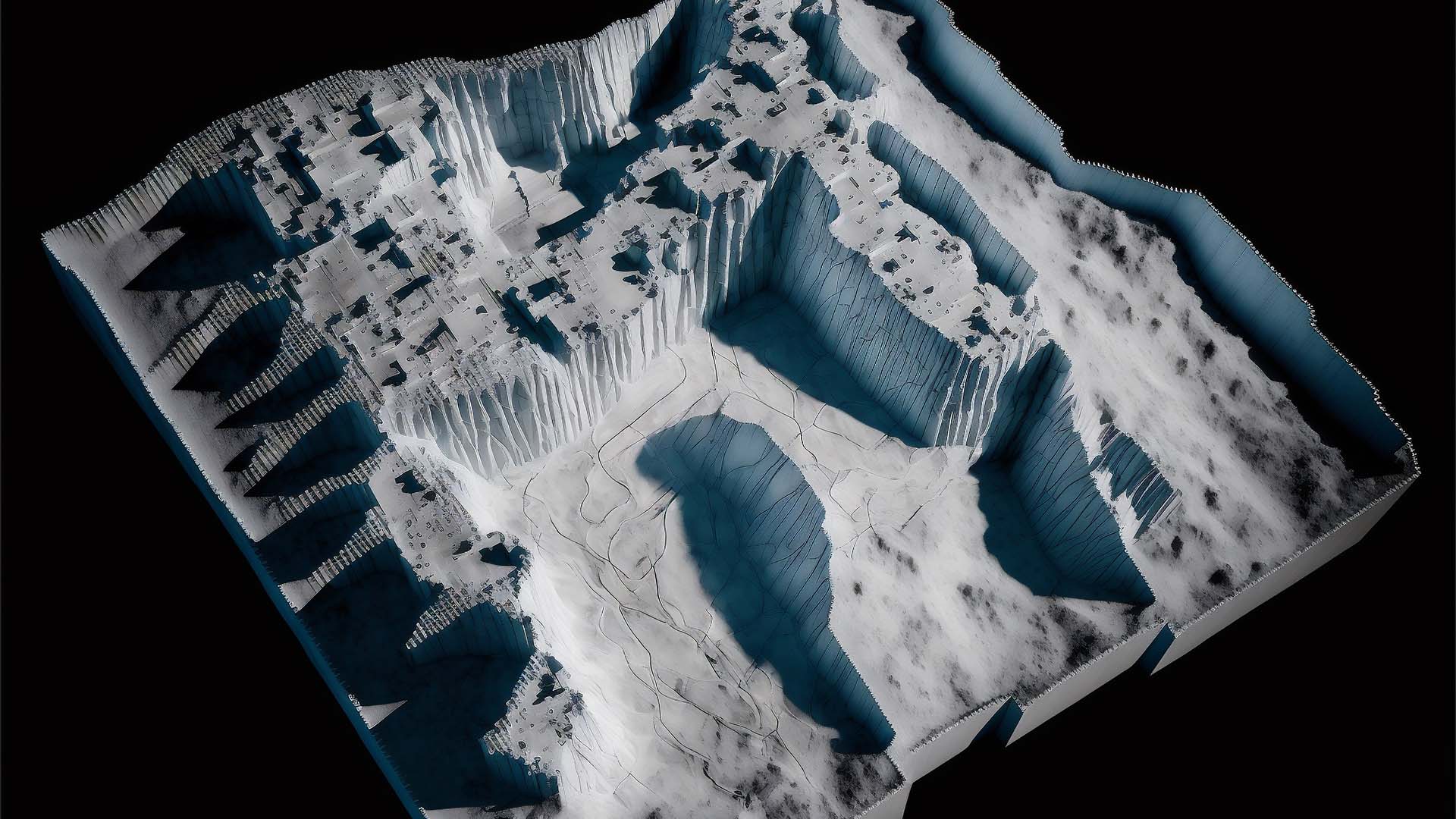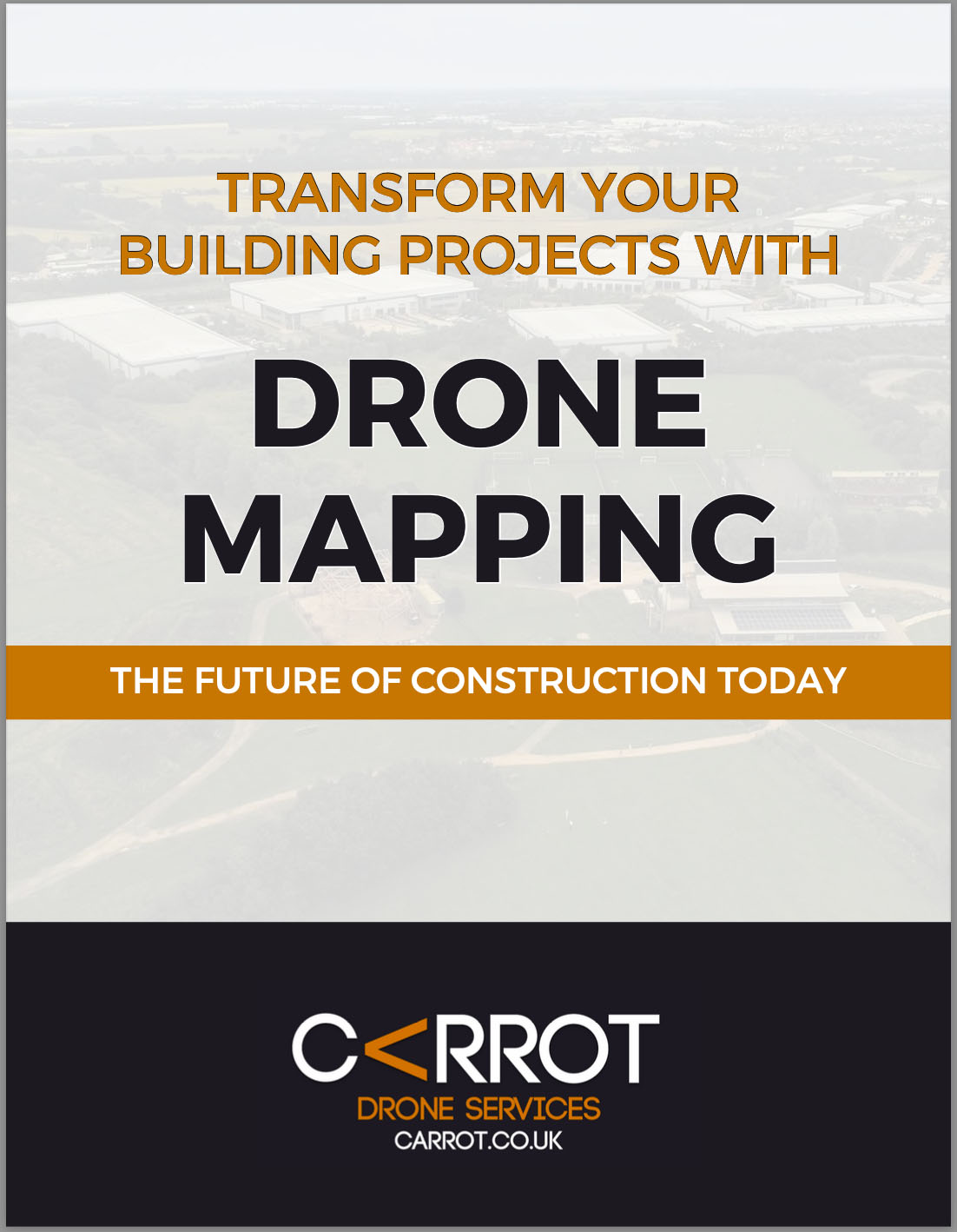Read Time 5 mins
18/01/2024

Introduction to Drone Inspections
The advent of drone technology has revolutionised numerous industries, bringing forth a new era in how we approach tasks that were once hazardous and time-consuming. At the forefront of this revolution are drone inspections – a method that employs unmanned aerial vehicles (UAVs) to survey, analyse, and report on the condition of buildings, infrastructure, and landscapes from the air. This innovative approach marks a significant departure from traditional inspection methods, which often involve working at heights and can pose considerable risks.
The evolution of drone technology in commercial use has been rapid and transformative. Initially developed for military purposes, drones have found their way into civilian use, proving their worth in various sectors including agriculture, real estate, and, notably, industrial inspections. The ability to reach inaccessible areas, capture high-resolution data, and deliver real-time insights without the need for direct human intervention has made drone inspections an invaluable tool in the modern world. Their application in commercial settings continues to expand, offering safer, more efficient, and cost-effective solutions for high-risk tasks.
The Risks of Traditional Height Work
Working at heights remains one of the most hazardous activities in various industries, often involving significant risks to workers' safety. The primary danger is the potential for falls, which can lead to severe injuries or fatalities. Factors like unstable working surfaces, human error, and failure of safety equipment can exacerbate these risks. According to Health and Safety Executive (HSE) statistics, falls from height were the leading cause of fatal injuries to workers in the UK, accounting for 29% of all fatal injuries in recent years.
Beyond the immediate danger of falls, workers at height are also exposed to risks like the collapse of the structures they are inspecting, adverse weather conditions, and equipment failure. These factors not only endanger the workers but can also lead to costly delays and damage to property. The physical and psychological strain of working at elevated heights should not be underestimated, contributing to fatigue, which can, in turn, increase the likelihood of accidents.
The statistics paint a sobering picture of the inherent risks associated with traditional height work. For instance, the HSE reported that in 2019/2020, there were 47 fatal injuries due to falls from a height in the workplace in Great Britain. Moreover, non-fatal injuries are also significant, with thousands of reported cases each year leading to lost work days and long-term health implications for the affected workers.
Drones: A Safer Alternative
In the quest to mitigate the risks associated with working at heights, drones emerge as a groundbreaking solution. By leveraging drone technology for inspections, the need for human presence in potentially dangerous locations is significantly reduced. Drones can effortlessly ascend to high elevations, navigate tight spaces, and cover extensive areas, all while the operator remains safely on the ground. This approach drastically lowers the risk of falls and other accidents that are common in height work.
The safety benefits of using drones for inspections are manifold. First and foremost, they eliminate the direct exposure of workers to risky heights and unstable conditions. Drones are equipped with advanced cameras and sensors, enabling them to capture detailed images and data from a safe distance. This capability is particularly advantageous in inspecting high-rise buildings, bridges, wind turbines, and other structures where manual inspection would be hazardous and resource-intensive.
Moreover, drones can operate in a variety of weather conditions, reducing the risk of accidents caused by adverse weather, which is a significant concern in traditional height work. They also allow for more frequent inspections with less planning and downtime, ensuring continuous monitoring and early detection of potential issues. This proactive approach not only enhances safety but also contributes to the longevity and maintenance of the structures being inspected.
Applications of Drones in High-Risk Areas
The application of drones in high-risk areas extends across a diverse range of industries, showcasing their adaptability and efficiency. One of the most prominent uses is in building inspections. Drones provide a safer and more efficient way to inspect high-rise buildings, historical structures, and residential properties. They can easily access hard-to-reach areas, capturing high-quality images that help in identifying structural issues, damage, or needed repairs.
In the energy sector, drones play a crucial role in inspecting wind turbines and solar panels. These structures often require regular monitoring to ensure optimal performance and safety. Drones can quickly and safely inspect these installations, identifying potential issues like blade damage in wind turbines or panel degradation in solar farms without exposing workers to heights or electrical hazards.
The construction industry also benefits from drone technology. Drones assist in surveying construction sites, monitoring progress, and ensuring that projects comply with architectural plans. This aerial perspective is invaluable for large-scale projects, providing a comprehensive view that can't be easily achieved through ground-level inspections.
Furthermore, drones are increasingly being used in areas like telecommunications for inspecting cell towers, in public safety for search and rescue operations, and in environmental monitoring to assess areas affected by natural disasters or environmental hazards. Each of these applications demonstrates the versatility and effectiveness of drones in reducing the risks associated with traditional methods of inspection and monitoring in high-risk environments.
Drone Features That Make the Difference
The effectiveness of drones in inspection tasks is largely attributed to their advanced features. Key among these is the superior camera quality. High-resolution cameras, often equipped with zoom capabilities and thermal imaging, allow drones to capture detailed images and videos from a safe distance. This precision is crucial for identifying structural issues, wear and tear, and other anomalies that might not be visible to the naked eye.
Stability and maneuverability are other critical features. Modern drones are designed to be highly stable even in challenging weather conditions. This stability ensures that the quality of the data collected is not compromised. The ability to maneuver in tight spaces and at varying altitudes makes drones ideal for inspecting complex structures like bridges, towers, and industrial equipment.
Drones also boast impressive efficiency and speed. What traditionally took days to complete can now be done in a matter of hours, drastically reducing downtime and operational costs. Their ability to quickly cover large areas makes them particularly useful for surveying and monitoring extensive sites, such as solar farms or construction projects.
The reliability of drone technology is a significant advantage. Equipped with sensors and navigation systems, drones can operate with precision in a variety of environments. The data collected is not only accurate but can be processed and delivered in real-time, enabling prompt decision-making and action.
Furthermore, the integration of drones with software solutions for data analysis and reporting streamlines the inspection process. This integration allows for the automation of data collection and analysis, further enhancing the efficiency and effectiveness of the inspections.
Regulations and Compliance
The utilisation of drones for commercial purposes, especially in inspections, is subject to a variety of legal considerations and safety regulations. These regulations are in place to ensure the safe operation of drones, protection of public privacy, and the integrity of airspace. In the UK, the Civil Aviation Authority (CAA) sets forth the guidelines that govern the use of drones, including specific regulations for commercial operations, which are constantly evolving to keep pace with technological advancements.
Compliance with these regulations is paramount. It involves acquiring the necessary permissions, adhering to no-fly zones, ensuring data protection when capturing imagery, and maintaining operational safety standards. For instance, drone operators must be qualified and hold a CAA-recognised qualification, and they must ensure that the drones are flown within visual line of sight and at specified altitudes.
At Carrot Drone Services, navigating the complex web of drone regulations is a cornerstone of our operations. Our team is not only well-versed in the latest regulations but also committed to staying abreast of any changes. We possess the necessary certifications and qualifications to operate drones legally and safely in various environments. Our expertise extends to conducting risk assessments, securing permissions, and ensuring that every flight adheres to the highest standards of safety and compliance.
Our clients can rest assured that their projects are in compliance with all legal requirements, mitigating any potential legal risks. This thorough understanding of drone regulations and commitment to compliance set Carrot Drone Services apart, ensuring that our clients receive the highest standard of service while adhering to the law.
Carrot Drone Services: Your Partner in Safety
Carrot Drone Services, headquartered in St Albans and extending its reach across the Northern Home Counties, Hertfordshire, Essex, Bedfordshire, Buckinghamshire, London, East Midlands, and West Midlands, stands as a beacon of innovation and safety in the realm of drone-operated inspections and surveys. Our company is dedicated to elevating the standards of aerial inspections, providing services that are not only efficient and reliable but also underscore a commitment to safety and precision.
Specialising in a wide array of services, including drone photography, videography, detailed inspections, mapping, and surveying, Carrot Drone Services caters to a variety of sectors such as construction, real estate, agriculture, and infrastructure. Our team, composed of certified drone operators, leverages the latest in drone technology to ensure top-notch service delivery. We are adept at capturing high-resolution images and conducting thorough inspections, even in the most challenging environments.
What sets us apart is our unwavering commitment to client satisfaction and safety. Understanding the intricacies of each project, we tailor our approach to meet specific client needs, ensuring a personalised service experience. Rapid response times, adherence to stringent safety protocols, and a keen eye for detail define our operational ethos. Additionally, our proactive stance in staying updated with the latest drone technologies and regulations means that we are always at the forefront of the industry.
At Carrot Drone Services, we don't just offer services; we offer peace of mind. Our clients trust us for our reliability, expertise, and the assurance that their projects are in capable hands. From conducting risk assessments to navigating complex regulatory landscapes, we handle every aspect with the highest level of professionalism and diligence. Partnering with us means choosing a path where safety, quality, and innovation converge.
Conclusion
The advent of drone technology has marked a significant shift in how inspections and surveys are conducted across various industries. Drone inspections offer a safer, more efficient, and cost-effective alternative to traditional methods, especially in high-risk environments. By minimising the need for human presence at dangerous heights and in difficult-to-access locations, drones significantly reduce the risks associated with such tasks. The high-quality imaging, stability, and maneuverability of drones, coupled with their ability to provide real-time data, make them an invaluable tool in the modern inspection landscape.
Carrot Drone Services, with its expertise in cutting-edge drone technology and a deep commitment to safety and client satisfaction, stands ready to assist businesses and organisations in harnessing these benefits. Whether it's for building inspections, infrastructure monitoring, agricultural surveys, or any other application, our team of certified professionals is equipped to deliver tailored solutions that meet your specific needs.
We invite you to experience the Carrot Drone Services difference – where safety, efficiency, and innovation are not just promises, but realities. Contact us today to explore how our drone services can elevate your operations and ensure the safety and success of your projects.
For more information and to discuss your specific needs call us at +44 3333 034874. Let Carrot Drone Services be your partner in navigating the skies safely and efficiently.
